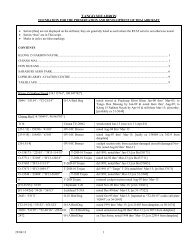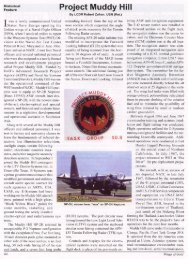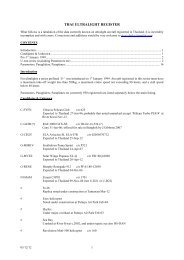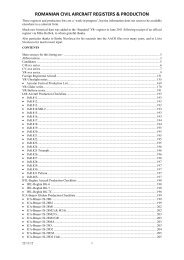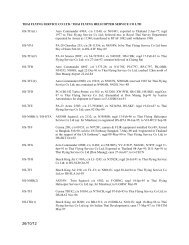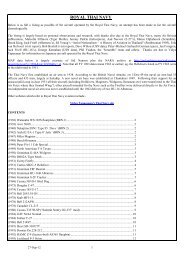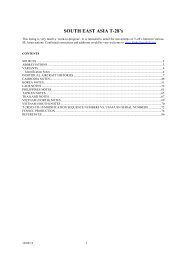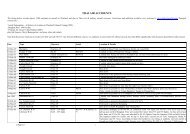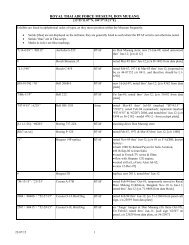Project Muddy Hill - Thai Aviation History
Project Muddy Hill - Thai Aviation History
Project Muddy Hill - Thai Aviation History
Create successful ePaper yourself
Turn your PDF publications into a flip-book with our unique Google optimized e-Paper software.
seven-foot long outside air intake probe extending forward from the top of the nose<br />
section supported the TFR system angle of attack flying-wing device. The forward<br />
section of the existing APS-20 radar radome incorporated the Forward Looking<br />
Infrared (FLIR) system that was capable of being scanned from the horizon to 20 0<br />
aft of nadir. A small faring just forward of the MAD boom housed a Fairchild<br />
Instruments, horizon-to-horizon, 70mm format reconnaissance camera.<br />
The Active Magnetic Anomaly Detection transmitter was a 36-inch diameter coil of<br />
#8 solid copper wire tilted 25 0 to the vertical mounted directly behind the aft observer<br />
seats with controls located at the flight deck sensor station. The Neptune’s wing fuel<br />
tanks were filled with orange-colored, polyurethane reticulated foam to minimize fuel<br />
sloshing and the possibility of wing fires initiated by small to medium caliber ground-<br />
fire.<br />
Controls and displays for the FLIR, L 3 TV, TFR and Active Magnetic Anomaly<br />
Detection sensors were installed at the flight deck sensor station, forward on the<br />
flight deck. The navigation station was centrally located on the flight deck with a<br />
B-52 bomb guidance/navigation computer, Litton LN15 inertial system, APN-92<br />
Loran C and APN-122 Doppler groundspeed/drift navigation system comprising the<br />
integrated navigation suite. The active and passive electronic countermeasures<br />
(ECM/ESM) equipment was located on the flight station, just forward of the wing<br />
beam.<br />
Between August 1966 and June 1967, crewmember training and EO systems flight<br />
tests were conducted utilizing Electro-Systems runways and ground facilities and<br />
the surrounding Greenville countryside. Additional systems test operations in<br />
simulated Southeast Asia environments were conducted at the Fort Hunter Liggett<br />
Proving Grounds on the central coast of Northern California. In July 1967, the<br />
project relocated to NATC Patuxent Rived MD, for pre-deployment preparations.



